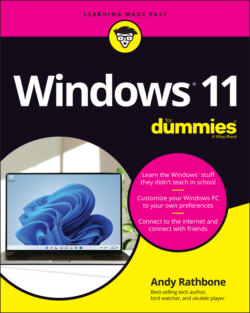Читать книгу Windows 11 For Dummies - Andy Rathbone - Страница 34
PERSONALIZING THE START MENU
ОглавлениеThe Windows 11 Settings app offers additional ways to tweak the Start menu. I cover the Settings app in Chapter 12, but this sidebar applies particularly to the Start menu.
To find the Start menu settings, click the Start button, choose the Settings icon, and click the Settings app’s Personalization button. When the Personalization page appears, click Start in the left pane, and the Start menu’s options spill out to the right.
The Start menu section offers these options:
Show recently added apps: A boon for those who hate to organize things, leave this on, and newly installed apps will automatically appear in the Start menu’s Pinned area.
Show most used apps: Another perk for the lazy, leave this on: The Start menu automatically stocks your Start menu’s Pinned area with your most-used apps.
Show recently opened items in Start, Jump Lists, and File Explorer: Leave this turned on so you can return to favorite destinations, both listed on the Start menu and on the taskbar’s Jump Lists, covered in Chapter 3, as well as atop File Explorer’s left corner.
Folders: The Start menu’s bottom edge normally lists your account name, a lot of empty space, and a power button. Click here to fill that empty space with links to your favorite folders and other things. You can add or remove links to Settings, File Explorer, Documents, Downloads, Music, Pictures, Videos, Network, and Personal Folder, which opens to show links to all your most popular folders.
There’s no right or wrong way to set these settings. Stick with the default settings or experiment to see which settings work for you. The settings are all on-and-off toggle switches, so you can always return and flip the toggle again if a change doesn’t meet your needs.
